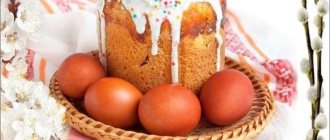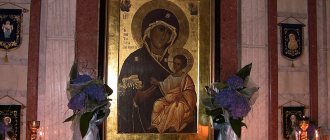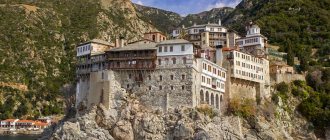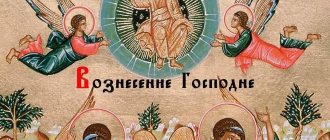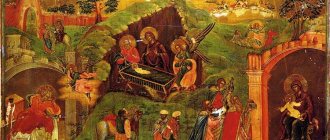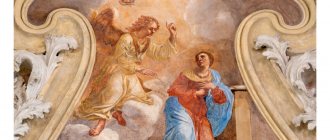What date is Easter for Orthodox Christians in 2022?
It must be a surprising phenomenon from the outside: where Orthodox Christians who regularly participate in church life and receive the Sacraments make up no more than 10% of the population, this holiday is celebrated by almost the majority. Not always deeply familiar with religious traditions, our compatriots, however, most often know: Easter in 2022 falls on April 24. But every year the date of celebration according to the church calendar falls on a different date.
When is Easter celebrated?
The date of the celebration of the Holy Resurrection of Christ belongs to the moving holidays. Every year it is celebrated on different days, depending on the lunar calendar. This is because the crucifixion and burial of Jesus took place during the Jewish holiday of Passover, which fell on the 14th day of the month Nisan. Since the religious calendar of the Jews is lunisolar, the date of the holiday is constantly shifting.
The earliest date for Easter for Orthodox Christians is April 4, and the latest is May 8. Other Christians - Catholics and Protestants - celebrate the holiday on other days. Typically a week or two earlier, depending on the Gregorian calendar.
But Catholic Easter , like Orthodox Easter, has its own restrictions on the time of occurrence. It cannot take place earlier than March 25 and later than April 25.
The principle by which the date of Easter is determined is enshrined in a special document called Easter. This document was adopted at the First Ecumenical Council, held back in 325. The assembled theologians decided that the Christian Easter should not take place at the same time as the Jewish one. And since then, Orthodoxy has celebrated Christ's day on the first Sunday after the first new moon, which follows the day of the vernal equinox.
The Crucifixion of Christ is the main symbol of Christianity
When is Easter and Parents' Day? Dates of the main Orthodox holidays and fasts for 2022
We publish a calendar of Orthodox holidays, memorial days and fasts for 2022.
January 7 - January 19.
Christmastide (holy days). Christmastide is the period between Christmas Eve and Epiphany. They traditionally last 12 days. Christmastide mentions church regulations back in the 6th century, which on these days prohibited fasting, kneeling and the sacrament of marriage. Throughout the Christmas season, you can congratulate each other on the Nativity of Christ, go to visit, give gifts and thus glorify the Son of God born into the world. The Church is categorically against any fortune telling, because they are nothing more than flirting with demonic forces and voluntarily surrendering oneself to their power.
January 14.
Circumcision of the Lord. This day is considered a great holiday in Orthodoxy. It is celebrated on the eighth day after the Nativity of Christ according to Orthodox tradition. The Day of “Circumcision of the Lord” is dedicated to the date when Jesus, in infancy, according to the Jewish canon, had his foreskin circumcised. Christians believe that this event symbolizes and proves the humanity and nature of Jesus.
January 18.
Vespers of the Epiphany or Epiphany Christmas Eve. On Epiphany Eve, people fast until dinner. In the evening, the water in the church is blessed, this water should be on the table, and they also sprinkle the home with it. It is believed that on the night of January 18-19, the heavens open and listen to requests. At midnight, people go out into the open sky and make their deepest wishes. Prayers said with sincere faith instill confidence in one’s abilities and contribute to the spiritual growth and development of everyone.
January 19.
Epiphany, or Epiphany. This is one of the main Christian holidays. It was established in honor of the Baptism of Jesus Christ, which took place when the prophet John the Baptist, recognizing Christ among many people, baptized Him.
The 14th of February.
Week about Zacchaeus the Publican. Orthodox Christians are beginning to prepare for Lent. They remember the Gospel story about the publican Zacchaeus.
February, 15.
The Presentation of the Lord is one of the most ancient Orthodox holidays. On this day, the clergy remind us of an important event - the meeting of Jesus, who was exactly 40 days old from his birth, with Elder Simeon and Anna the Prophetess.
On this day it is customary to bless church candles. They are kept all year and lit during home prayer. According to popular beliefs, such a candle, placed immediately upon arrival from church, protected the house and the future harvest. A candle burning evenly and calmly is for the health of the family.
March, 6.
Ecumenical Parental Saturday (Saturday before the week of the Last Judgment). Day of special remembrance of the dead.
March 8 - 14.
Maslenitsa, or Cheese Week. The most famous Slavic holiday today is Maslenitsa; both adults and children know about its traditions. It is celebrated on the Sunday before Lent, but the entire week before it is considered festive. Maslenitsa week is often called Cheese Week - due to the fact that during this period you cannot eat meat, but you can and should eat cheeses and other dairy products.
March 14th.
Forgiveness Sunday. The last Sunday before Lent is called Forgiveness. The Church calls on believers to make peace with everyone and forgive everyone before entering Lent.
March 15 - May 1.
Great Lent. Lent is the longest in the church calendar and the strictest in terms of restrictions. During fasting, meat, fish, milk and dairy products are excluded from the diet, and they also refrain from heat processing of food, vegetable oil and alcohol.
March 27.
Ecumenical Parental Saturday of the 2nd week of Lent. Day of special remembrance of the dead.
April 3
. Ecumenical Parental Saturday of the 3rd week of Lent. Day of special remembrance of the dead.
April, 4
. 3rd Sunday of Lent, Worship of the Cross. On the third Sunday of Great Lent, the Holy Cross is brought to the middle of churches for worship by believers. This is done in order to recall the suffering and death of the Lord and to strengthen those who are fasting to continue fasting.
April 7.
Annunciation of the Blessed Virgin Mary. On this day, Archangel Gabriel announced to the Virgin Mary the birth of her son, Jesus Christ.
April 10th
. Ecumenical Parental Saturday of the 4th week of Lent. Day of special remembrance of the dead.
April 24.
Lazarus Saturday (Saturday of the 6th week of Great Lent). On this day, Christians remember the miracle of Christ’s resurrection of the righteous Lazarus, which was performed to confirm the future resurrection of all the dead.
25th of April.
Palm Sunday (entry of the Lord into Jerusalem). The Entry of the Lord into Jerusalem is one of the main events of the last days of the earthly life of Jesus Christ, which is described by all four evangelists and which is considered a symbol of the future reign of God. In Russian liturgical books it is also called Flowering Week, and in common parlance Palm Sunday, which is due to the fact that palm branches in Slavic countries were replaced by willows.
April 26 - May 1
. Holy Week. Holy Week is the last week before Easter. For Orthodox believers, this is the most important period of the year, marking the last days of Christ's earthly life.
April 30.
Good Friday. Good Friday is the Friday of Holy Week, which is dedicated to the remembrance of the death of Jesus Christ on the cross, the removal of His body from the cross and burial.
May 2.
Holy Resurrection of Christ, Easter. Easter is the oldest and most important Christian holiday, the holiday of the Resurrection of Jesus Christ - an event that is the center of all biblical history.
May 11
. Radonitsa. Orthodox Radonitsa or “parents' day” is the ninth day after Easter. Every year, at this special time, Russians visit cemeteries en masse and commemorate relatives. This tradition is observed by both believers and people far from the church.
June 10th.
Ascension of the Lord. The name of the holiday reflects the essence of the event - this is the Ascension of the Lord Jesus Christ to Heaven, the completion of His earthly ministry. This event is celebrated on the 40th day after Easter.
June 20.
Trinity Day, Pentecost. The day of the descent of the Holy Spirit on the apostles was the day of the appearance of the Most Holy Trinity. The Holy Spirit was sent to earth by the Son of God, who ascended to the Father. That is why the holiday is called Trinity.
June 28 - July 11.
Petrov post. Petrov's fast is not as strict as Great or Assumption fast. The duration of fasting is always different, since the beginning of Peter's fast depends on the date of the celebration of the Trinity - but the end date is fixed.
August 14 - August 27.
Assumption Fast. It was erected in honor of the Feast of the Dormition of the Blessed Virgin Mary. The severity of the meal remains the same as during Lent. This means that meat, dairy products and eggs are excluded. On other days, the diet should consist of plant foods - vegetables, fruits and various cereals.
August 19.
Transfiguration. With His Transfiguration, the Savior showed people what they would become in the future life, in the Kingdom of Heaven, and how our entire earthly world would then be transformed. On the Feast of the Transfiguration, after the liturgy, grapes and all sorts of fruits, such as apples, pears, and plums, are brought to the temple and blessed.
August 28.
Dormition of the Blessed Virgin Mary. The Dormition of the Blessed Virgin Mary is a special holiday in Orthodoxy. It is celebrated on the day of the death of the Blessed Mary. It is also called the second Easter. On this day, they remember the end of the life of the Blessed Virgin Mary and her ascension into heaven. The strict Assumption Fast ends today. The word “dormition” itself is interpreted as “sleep” and denotes the transition from earthly life to heavenly life.
September 21.
Nativity of the Blessed Virgin Mary. This is the first holiday in the church new year, with it the new church year begins. According to legend, the Virgin Mary was born in Jerusalem in the house of Joachim and Anna, who prayed for the gift of a child. The Archangel Gabriel brought good news to the parents and ordered them to name their daughter Mary - grace. On this day, childless families turn to the icon of the Nativity of the Blessed Virgin Mary with a special prayer for the gift of a child, family happiness and health.
October 14.
Protection of the Blessed Virgin Mary. This holiday was established in memory of the appearance of the Mother of God in the 10th century in the Blachernae Church in Constantinople. The miracle of the appearance of the Most Holy Theotokos has since come to be understood as a sign of the protection of the Mother of God to all those who pray and resort to her intercession.
November 6.
Dmitrievskaya parent's Saturday. Day of special remembrance of the dead.
November 28 - January 6, 2022
. Christmas post. This post is the last one of the year and lasts 40 days. Exclude meat, dairy products and eggs from the diet.
Source: https://u24.ru/news/55724/kogda-budet-pasha-i-roditel-skiy-den-daty-glavnyh?utm_referrer=https%3A%2F%2Fzen.yandex.com
History of Easter
The celebration of Easter took place even before the resurrection of Christ. The Old Testament Passover , or Passover, was celebrated by the Jews as the day of deliverance from Egyptian slavery. It was then, on the fourteenth day of the month of Abib (according to the Jewish calendar), that the mass exodus of the Jews took place under the leadership of Moses.
The crucifixion of Jesus Christ happened just on the days when Passover was celebrated. After the miraculous resurrection of the son of God, the Old Testament Easter lost its meaning, and Christians all over the world began to celebrate Easter - a bright holiday and the basis of the entire Christian religion.
The meaning of Easter is that Jesus Christ, being sinless himself, took upon himself the sins of humanity, thereby opening the way for people to eternal life. And then he ascended to his God and opened the way to heaven for believers.
Painting by A. Montaigne “The Crucifixion”, 1457-59.
history of the holiday
By order of the Roman procurator of Judea, Pontius Pilate, Jesus Christ was sentenced to painful death - crucifixion. He was crucified on Mount Calvary on the outskirts of Jerusalem. The exact date of the Savior’s death is unknown. This happened on Friday, in the period from 26 AD. to 36 AD After his death, Jesus was wrapped in a shroud and placed in a tomb (a stone cave) until the Sabbath rest. On the night from Saturday to Sunday, on the eve of the Jewish Passover, the Myrrh-Bearing Women came to the tomb. They discovered an unlocked cave and an angel in it, who informed them of the resurrection of Christ.
The holiday received its name “Easter” from the Jewish Passover, on the night of which the Resurrection of Christ took place. The Jewish Passover is dedicated to the Exodus - the liberation of the Israelites from four centuries of slavery under the yoke of the Egyptian pharaohs. These events are described in the Old Testament.
How Easter was celebrated in Rus'
In Russia, until 1917, Easter was a public holiday. The first three days of Bright Week were declared non-working. The celebration took place with all the necessary attributes:
- Easter services;
- religious processions;
- family prayer services in homes;
- festive feasts.
In the villages, Easter was celebrated especially widely. Church buildings were decorated with lanterns, and bonfires were laid around the temples. It was believed that the ember from the Easter fire would save the home from fire. To do this, coals were collected and placed under the roofs of houses.
All three days of Easter week there were festive festivities. Our ancestors devoted themselves wholeheartedly to this bright holiday. Particularly common were:
- round dances;
- swing rides;
- competitions in dexterity and courage;
- games, including those with colored eggs.
All week the Orthodox Christians visited each other. Neighbors, relatives and friends were invited. On the table that day were all the savory dishes that believers denied themselves during Lent - meat, lard, fish, poultry. The main attributes of the festive feast are eggs, Easter and Easter cakes.
THIS IS INTERESTING. The tradition of painting eggs comes from time immemorial. Mary Magdalene came to Emperor Tiberius and reported that Christ is Risen. At the same time, she handed him a chicken egg. To which Tiberius replied that he would believe it if only the egg in Magdalene’s hand turned red. And the egg immediately turned red.
V. Makovsky “Prayer for Easter”, 1887-88.
In cities, they prepared for Easter no less carefully. In St. Petersburg, which was the capital of the Russian Empire, there was even an approved ceremony. It included decorating the Peter and Paul Fortress with lights, performing orchestras, and firing cannons.
The end of Lent and the celebration of Easter gave the signal for the resumption of balls, theatrical performances, festivities in gardens and social receptions. Swings were installed in the squares, fairs were organized and various events were held. All this was accompanied by constant ringing of bells, symbolizing the arrival of the bright holiday.
After the revolution of 1917 and the “godlessness” that followed, Easter began to be celebrated on one day, on Sunday. Church services were held, but the number of parishioners was extremely small. Serious troubles awaited everyone who attended the church, from dismissal from work to arrest and accusations of political unreliability.
After 1928, there came a time of open persecution of the church. Those who visited churches and celebrated church holidays were also persecuted. Only once, in April 1942, the authorities allowed to celebrate Easter. That night, the curfew in Moscow and St. Petersburg was even lifted, and believers were allowed to come to church. However, there was a war going on then, and this was the only relief.
Until Gorbachev came to power, church holidays, including Easter , were under an unspoken ban. For visiting church you were no longer fired from your job or summoned to the authorities, but you could lose your membership in the party or Komsomol.
Blessing of Easter cakes and eggs
What traditions are there for Easter?
The main tradition for Easter is trick-or-treating. During the entire week after the end of fasting there are no restrictions on food. Therefore, gather your family and friends around you and treat them to various delicacies. When visiting, do not refuse treats.
The second tradition is to cook Easter cakes and Easter cakes. This is usually done on Big Thursday. On this day they paint eggs and clean the house. The third tradition is to consecrate traditional delicacies in the temple: eggs, Easter cakes, Easter cakes. Many Russians add smoked meats, meat products, and cheeses to their holiday basket.
There is also a tradition of baptizing children on Easter. After all, Easter week is considered the best period for new members to join the church.
Source
Easter in Russia in 2022
In our country, Easter is now celebrated widely and openly. Easter services are broadcast on federal channels. The country's top officials attend these services and are congratulated by the Patriarch. It has become a tradition in many companies to have an extra day off on the second day of the second Easter week. This is the so-called Radonitsa - the day of remembrance of deceased relatives. This day is widely revered in Russia, Ukraine and Belarus. It is believed that on this day one should visit cemeteries and bring remembrances, wreaths and flowers to deceased relatives.
We invite you to see how Orthodox Christians now celebrate Easter:
THIS IS INTERESTING. The largest Easter egg is kept in Canada, in the city of Vegreville. It is made from painted aluminum sheets according to a design by a local designer. The egg reaches 9 meters and weighs about 2.5 tons.
In 2022, Easter falls on May 2. This is the most fertile time when everything in nature blooms and rejoices. In the southern regions of our country, tulips are in full bloom and lilacs are blooming. This makes the holiday even brighter and richer. The awakening of nature from winter sleep fully corresponds to the very meaning of the holiday - the revival and renewal of all living things.
Easter procession in the city today
Preparing for Easter
The Feast of the Resurrection of Christ is preceded by Lent. This is the time that believers should spend in prayer, repentance and various restrictions. The most important limitation is abstaining from unkind thoughts and actions, eradicating such vices as envy, slander, and ill will.
Lent lasts 7 weeks. It involves serious restrictions, including:
- Abstinence from fast food. These days, believers are not allowed to eat animal products, as well as some plant foods. Sunflower oil, for example, can be eaten only a few times during the entire fast.
- A ban is imposed on smoking and drinking alcohol. Only on major church holidays can you afford a little wine.
- Participation in entertainment events is prohibited. Dancing, going to the cinema, weddings and parties are inappropriate during Lent.
- Intimate life is also prohibited, even for married spouses. In the old days, the church did not baptize children conceived during Lent.
- Foul language, bad thoughts, quarrels.
- Envy, resentment, lies and other negative manifestations are considered a special sin during Lent.
Lent for believers is an opportunity to join in the great sacrifice that Jesus Christ made, accepting torment and terrible death for the entire human race.
Everything is ready for the blessing of products for the Easter table
What holiday is it
The events of the day mark the victory of life over death, the triumph of Heaven over earth, spiritual existence over material, perishable existence. Christ, who voluntarily accepted death on the cross, by his death removes the burden of sins from humanity, gives forgiveness and hope for a new life. His resurrection confirms that cleansing has been accomplished and that believers have been granted eternal life.
The essence of the holiday is to overcome the obstacle that separated God and people. Christ makes a sacrifice for the atonement of sins; it affirms that there is enough light in the human soul. The resurrection takes place due to the divine principle, which is also part of it. This is God's answer to people, proof of his power and mercy.
The story of Christ is a message to believers that the death of matter gives birth to spirit. This idea appears not only in religious teachings, but also in philosophical theories. As the sages said, earthly gold is a weak reflection of true, that is, spiritual, heavenly gold.
Celebrating Easter - rituals and traditions
Easter celebrations begin at midnight. The arrival of the holiday is announced by the most important clergyman in Russia - the Patriarch. He usually conducts the Easter service. At 12 o'clock at night he says “Christ is Risen!” With these words, believers will greet each other all Easter days, right up to the Feast of the Ascension. The answer to these words is the phrase “He is risen indeed.”
Saying the Easter greeting, believers kiss three times, congratulating each other on the great holiday.
After the service, believers go home to break their fast. This term refers to eating foods that were prohibited during fasting. Traditionally, these are colored eggs, lard, Easter cakes and Easter.
THIS IS INTERESTING. The smallest Easter eggs are miniatures made by Omsk master Anatoly Konenko. He, following the example of the famous left-hander, made eggs only 3 mm in size. They fit completely inside a pine nut shell.
One of the main attributes of the holiday is the exchange of painted eggs. On Easter, it is customary to visit each other, give gifts, and exchange treats.
Cottage cheese Easter, rich Easter cakes and eggs are the main attributes of the holiday
Who can save us from eternal death?
All of us, people of planet Earth, are like this patient. We all get sick, grow old and die. And all our medicines have only a temporary healing effect.
They cannot save us from certain death and give us eternal life. And the disease that we all suffer from is simply called sin.
But, as in this example, a new medicine that can save us from eternal death has already been prescribed by our loving doctor - God.
- …The wages of sin is death, but the gift of God is eternal life through Christ Jesus our Lord. (Rom.6:23)
Everything would seem simple and clear. Life and death on the scales of our existence. Sin is death, the heavy burden of all people. But there is a new medicine that can deliver us from death - Jesus. But for many, one thing is not clear: how to take this medicine?
In our world, billions of people consider themselves Christians. Many of them are sure that by calling themselves that, they have already secured a place for themselves in eternal life.
But you must admit, if you have a high temperature, then repeating out loud many times: “Aspirin, aspirin, aspirin, aspirin...” will not bring down the temperature.
And to recover from a serious illness requires considerable effort, and not just self-hypnosis. So how do you take this “medicine of life”?
- God loves the world so much that he gave his only begotten Son so that everyone who exercises faith in him will not perish but have eternal life. (John 3:16)
From these words it is clear that eternal life directly depends on whether we exercise faith in Christ or not. But in what sense should we exercise faith in him?
What does it mean to exercise faith in Christ?
Today, even many atheists believe that Jesus is a real historical figure. And Muslims even believe that he was a great prophet. So what, this will help them get eternal life? Of course not. Even just “accepting Jesus in your heart” is also not enough. The Apostle Paul sheds light on this issue:
- He did not, like those high priests, need to offer sacrifices daily - first for his sins, and then for the sins of the people (he did this once and for all, sacrificing himself), (Heb. 7:27)
Here is the key to the solution - the atoning sacrifice of Christ. In the past, Jews were required to sacrifice animals to atone for their sins.
This was the medicine that, although it helped partly, did not completely solve the problem. The sacrifice of Jesus is a new medicine that can work a miracle and give a person eternal life.
What, you can't believe it? But that's the whole point. It is the belief that the death of Jesus can cure death that is what is needed for eternal salvation.
But most people are like a sick person who, having received life-saving medicine, simply throws it away. He doesn't believe it CAN help him.
He can't believe it because he doesn't understand HOW it can help him. He doesn't want to believe because he doesn't TRUST the doctor who gave him this medicine. He doesn't believe the doctor because he KNOWS him BAD.
One day I happened to meet an elderly Baptist. He immediately put me down, saying that he had been studying the Bible for 30 years, and I couldn’t tell him anything new.
Well, okay, I thought, if you are so self-sufficient, then talk some sense into me, you idiot. I asked him a childish question:
- Tell me, why did Jesus die? “In order to redeem us from our sins,” he answered proudly, with knowledge of the matter. - But we are still sinners, right? - I asked him. “So that we have eternal life,” he offered the second, memorized option. “But no one lives forever,” I retorted, “right?”
Then I didn’t have a computer yet, but now I can say what happened to him then - his Windows 98 froze. With that we said goodbye.
This incident clearly shows that even many who read the Bible have no idea how this life medicine works, how to take it and at what time.
Easter treats
For Easter there are three main dishes that are on every table:
- Painted eggs. Eggs are painted both the old fashioned way, using onion skins, and using modern technologies - with the addition of mother-of-pearl, patterns and holiday stickers.
- Easter. This is a sweet dish made from cottage cheese, sour cream, sugar, butter and vanilla.
- Easter cakes. Easter cakes are rich holiday pastries with raisins, dried apricots, almonds, decorated with whipped egg whites and sugar. Traditionally, the letters “ХВ” are placed on the top of the Easter cake, which means “Christ is Risen.”
It is customary to prepare all these treats in advance, even in the last week of Lent. Festive food is being prepared on Maundy Thursday. And during the Saturday service, on the eve of Easter, all prepared treats are blessed in the church. In addition to Easter cakes and eggs, lard, boiled pork, apples and other products are brought to the blessing.
Easter in Russia is considered one of the main holidays. Many believers are in favor of making it a public holiday, like in pre-revolutionary Russia.
Why did Christ die?
Since we are already talking about the resurrection of Christ, let’s bring this topic to its logical conclusion, and for this we will go back to the beginning. Before Jesus could be resurrected, he had to die. For what?
A good example
One day a sick man came to see a doctor. He really needed the help of a doctor, as his condition was serious. The doctor prescribed this patient a good new medicine that was supposed to rid him of the disease forever. That's how it would have happened...
But our patient did not even bother to read the prescription carefully, but bought at the nearest pharmacy the medicine that he had been using for a long time before.
It helped him only partly and could not completely overcome his illness. Soon this man died...
Who is to blame for his death? Funny question, right? Well, of course he himself, since he did not follow the doctor’s clear instructions.

